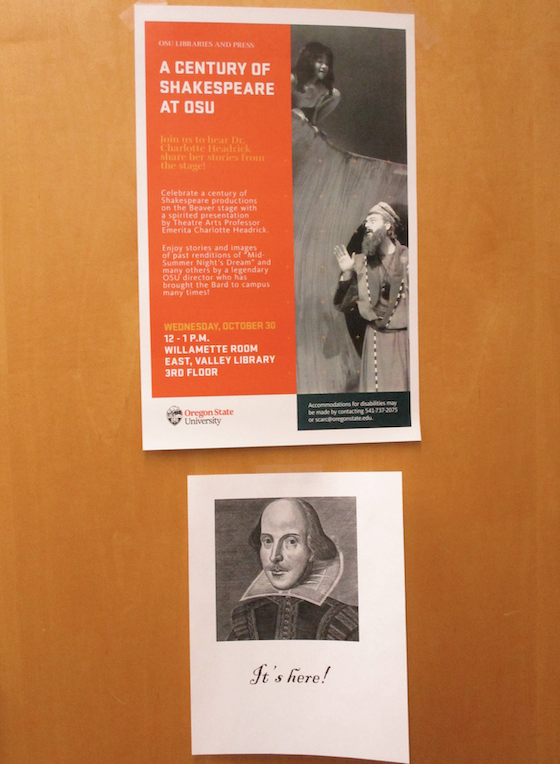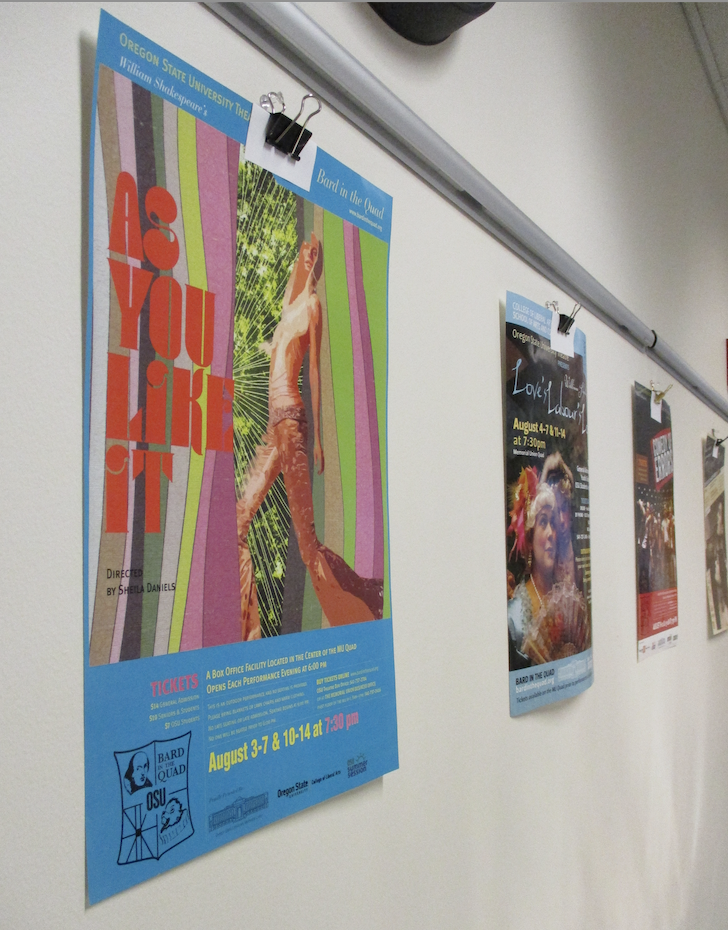
Puck, Ariel, and Romeo are familiar faces to the Beaver stage and their characters were brought to life by Professor Emerita of Theatre Arts Charlotte Headrick in a presentation on the history of Shakespeare productions at OSU. The event was organized by the OSU Special Collections and Archives in celebration of Oregon Archives Month and entertained 20 folks during their lunch hour on October 30th. In this quirky and fun overview, which began with a view from the first known student staging of a Shakespeare play (Julius Caesar) in 1895, Charlotte shared tales of near disaster (the actor who had to be roused from his bed at home to play his part on the opening night of the Merchant of Venice), unconventional productions (live chickens on the stage for Taming of the Shrew), and alums who would later shine bright in the world of theatre after OSU (Julyana Soelistyo, Michael Lowry, Soomi Kim, Sheila Daniels).
With a 35-year history of directing and performing in dozens of OSU theatre productions, Charlotte recounted stories of her many brushes with the Bard. These included details of the countercultural feel of a 2011 production of As You Like It where Charlotte played the character of Duke Senior wearing a patchwork quilt coat a la Ken Kesey. This play was a part of a very successful recent tradition of Shakespeare productions performed outdoors during the summer that began in 2006 and has continued on through this year. Posters for many of these annual “Bard in the Quad” productions were on display during Charlotte’s presentation, including the colorfully psychedelic one for As You Like It.

It was very fitting that Charlotte showcased campus history for Oregon Archives Month. For the nearly 20 years that I’ve been at OSU, Charlotte has been helping us preserve documentation of university theatre through many transfers of photographs, posters, programs, and prompt books. Not surprisingly, nearly all of the images featured in the presentation came from collections in SCARC. Her own career at OSU is reflected in The Charlotte Headrick Papers (unprocessed and not yet available) and there are two oral history interviews conducted with Charlotte in 2015 and 2019.

Charlotte’s Shakespeare presentation was videotaped by SCARC colleague Chris Petersen and is already available online! https://media.oregonstate.edu/media/t/0_wfkuiayg/2947392
All the world is a stage and we are here to archive it!











































